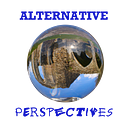How To Be A Hero
Compassion, courage and perseverance
What makes a hero?
Is it the reckless courage of Amelia Earhart, pilot, trailblazer, author?
Or perhaps it’s the noble self-sacrifice of those like Doctor Albert Schweitzer?
Maybe heroes are those who overcome tremendous odds to achieve greatness in their fields, like Stephen Hawking, or those like Martin Luther King Jr. who dedicate their lives to fighting for injustice.
Courage, compassion, perseverance: these are doubtless heroic qualities. Non-essentials for heroism are fame and glamour. I would like to write of one of these unknown heroes.
An unsung hero
Her name is Sue, and her passion is to rescue injured wildlife.
What should we do when we find an injured animal? We’ve known since childhood: call Wild Life Rescue for our area. Have you ever wondered what happens next? Where I live, in Eastern Australia, that’s when the volunteer wildlife rescuers come in.
Sue specializes in rescuing water birds. Often, the report comes in during the late afternoon or early evening. She drives her old truck out to some river, inlet or swamp, trying to find the injured bird before dark. Sometimes this requires wading through mud. Sometimes a bird takes to the water and she has to launch her tiny boat to go after it.
How you catch a large wild bird that is injured, terrified and in pain, then get it into a small boat on your own is beyond my imagination, especially if you’re working in the dark or pouring rain. Yet Sue never gives up till she has her target safely restrained and crated in the back of her truck.
Boat and gear collected and reloaded, she heads home, unless the injuries are so severe as to require the wildlife vet. Once home, she removes hooks, untangles fishing line, treats and bandages wounds. She then provides water and appropriate food, and leaves her charge in the quiet till morning. She spends the rest of the evening completing the necessary paperwork for Wildlife Rescue.
Hero at home
Sue’s house and yard are full of crates, paddling pools and birds: pelicans, ducks, black swans, cormorants, ibises and spoonbills, egrets and herons, waterhens, terns and gulls. She even rescued an eagle once, though she had to call for help on that one.
Some need careful tending for days or even weeks till they are able to fly and survive in their natural habitat. Sue then returns her patient to where she found it, releasing it back into the wild. One more life saved.
Sue has very strong opinions on careless fishermen who leave tangled lines in water or on river banks. She spends her spare time educating children in local schools in safe ways to fish near native birds, trying to make them aware that humans are not the only fishers in local waterways.
Who is this hero?
What kind of a woman would be up for this type of challenge? You might expect a fairly young Amazon, fit, athletic and full of energy. But no. Sue is in her seventies and suffers from back pain due to previous injuries. She just keeps going because the birds need her.
Those she saves will never thank her. They are more likely to tear at her with beaks and claws.
Unsung, unpaid, she quietly rescues and cares for those unable to care for themselves.
Some may consider it more important to care for people than for animals. How will the world really benefit from a few birds more or less?
That is a separate argument for another time perhaps, and misses my point. The value of sacrifice and service does not lie in its outcome, but in the compassion and dedication with which it is offered.
Sue taught me the real meaning of compassion and perseverance, of humility and of courage. She is a true hero.

